The Gift of Angling
If you are a keen angler with children I feel it is only fair to introduce them to the sport of angling with the many benefits it can bring. In this day and age many anglers it would seem do not make an effort to give kids the start they need. Angling will hopefully give a lifelong interest in the environment and a means to unwind in an ever stressful world.
I have been an angler for as long as I can remember and have never regretted my obsession with the pastime I love. Of course not everyone is destined to like fishing, I mean it must be in the genes or something. Your child may not be cut out for it but many are if given a good start.
So how do we go about introducing our children to our hobby? First of all you must try to see the world through a child's eyes. A couple of hours fishing is all you should aim for at first. Bites and plenty of fish are essential if interest is to be maintained. Children especially boys have short attention spans. So for this reason choose a venue that has an abundance of small fish. At first do not fish yourself, give all your attention to assisting your child with the task at hand. You will inevitably spend a considerable time sorting out tangles, don't lose your cool just keep calm and encourage. Spend the session shouting at your pupil and they will never want to go again. Have regular breaks for a snack. If the going is slow try a new spot. If the fish are really not having it go home, do something else and try again another day. When they do catch try to show enthusiasm, a tiny Roach or Rudd may not excite you but it will probably thrill a child.
Tackle
Well I guess I jumped the gun a little with the above introduction as they will need to have some tackle with which to catch a few fish. Now they could use yours but that probably isn't a good idea. If its good gear it may get damaged and lead to frayed tempers, if its old cast offs it may hinder them not being suitable for the job at hand. Now I am assuming that your child is aged five to ten years. My son James is seven now and has been fishing for a couple of years. I started him off with a 3 metre Whip which he could use to catch small Roach, Carp, Rudd etc. A tackle box, a few hooks, Floats, split shot, disgorger, a bait box full of maggots and a permit will be all you require for that first trip. This should all cost you £25.00 or less.
- Whip £6.00
- Packet barbless hooks (16) £1.00
- Split shot £2.00
- Floats £2.50
- Disgorger £0.50
- Spool of line £4.00
- Bait Box and Maggots £4.00
- Permit £5.00
Compare this to the price of a playstation game or similar and I am sure you will agree its not that dear.
The main consideration when taking a child fishing is of course safety. Many children drown by lakes and rivers every year so you must supervise at all times and choose a safe venue. It would obviously be foolish to take a child fishing on a flooded river. Hygiene is also important. Many venues are infested with rats which unfortunately carry the very real threat of Wiels Disease. Make sure that you carry some anti bacterial wipes for washing of hands prior to eating and to clean any cuts or grazes picked up on the waterside.
Get it right and you'll enjoy teaching them as much as they enjoy learning!

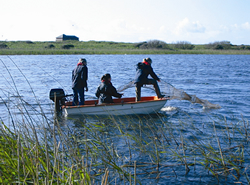 The European Eel (Anguilla anguilla) is an incredibly important, but often under-valued fish species in the Atlantic Area. It is essential to the economic viability of many small-scale coastal fishing communities in Europe as well forming part of the traditional fishing economy in the UK.
The European Eel (Anguilla anguilla) is an incredibly important, but often under-valued fish species in the Atlantic Area. It is essential to the economic viability of many small-scale coastal fishing communities in Europe as well forming part of the traditional fishing economy in the UK.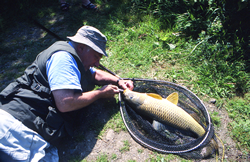 When I started fishing over half a century ago, carp had an almost mythical quality. Carp fisheries were few and far between – and when you found them their inhabitants had a reputation for being almost impossible to catch.
When I started fishing over half a century ago, carp had an almost mythical quality. Carp fisheries were few and far between – and when you found them their inhabitants had a reputation for being almost impossible to catch.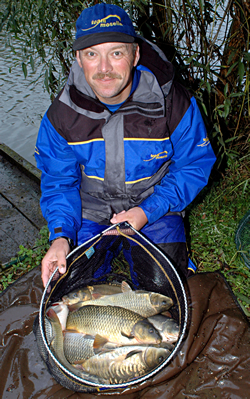 As a match angler of nearly 30 years I have seen changes to the sport I could never have envisaged when I started. From catching Roach, Bream and Chub from a sluggish Bristol Avon to the sometimes frantic sport encountered on the modern-day commercial waters.
As a match angler of nearly 30 years I have seen changes to the sport I could never have envisaged when I started. From catching Roach, Bream and Chub from a sluggish Bristol Avon to the sometimes frantic sport encountered on the modern-day commercial waters.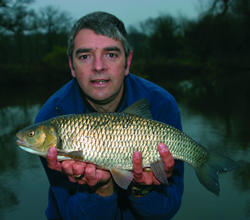 The South Wessex area is famous for it's big fish waters be it the chalk stream waters of the Hampshire Avon and Dorset Frome or the clay filtered Dorset Stour and its tributaries. Much of the fishing on these waters are controlled by angling clubs and syndicates, but there are some stretches that are open as day ticket waters or free stretches and these can give anyone a chance to capture that fish of a lifetime.Tickets and more information on all the waters can be obtained from this guide or local tackle shops in the relevant areas.
The South Wessex area is famous for it's big fish waters be it the chalk stream waters of the Hampshire Avon and Dorset Frome or the clay filtered Dorset Stour and its tributaries. Much of the fishing on these waters are controlled by angling clubs and syndicates, but there are some stretches that are open as day ticket waters or free stretches and these can give anyone a chance to capture that fish of a lifetime.Tickets and more information on all the waters can be obtained from this guide or local tackle shops in the relevant areas.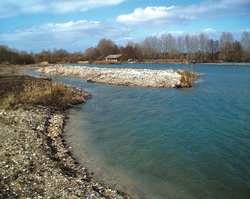 It is fair to say that over the years Angling and Conservation organisations have not always seen 'eye to eye' or been the best of 'bed-fellows'. Fortunately, things have been changing in recent years and the word 'conflict' is seldom heard echoing up the Avon valley. Both Conservation and Angling interest groups are working extremely hard in the South Wessex Area with a number of exciting initiatives underway and success stories reported.
It is fair to say that over the years Angling and Conservation organisations have not always seen 'eye to eye' or been the best of 'bed-fellows'. Fortunately, things have been changing in recent years and the word 'conflict' is seldom heard echoing up the Avon valley. Both Conservation and Angling interest groups are working extremely hard in the South Wessex Area with a number of exciting initiatives underway and success stories reported.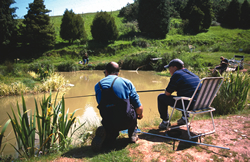 I have to say at the outset, that I was amazed by the amount of interest. Even given some small degree of apathy amongst the other teaching staff, that resulted in four forms not finding out about this new opportunity, 32 pupils signing up for my fishing tutorials was beyond my expectations.
I have to say at the outset, that I was amazed by the amount of interest. Even given some small degree of apathy amongst the other teaching staff, that resulted in four forms not finding out about this new opportunity, 32 pupils signing up for my fishing tutorials was beyond my expectations.